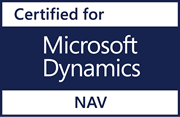Keeping it fresh with the Demand Planning System!
Posted on April 4, 2018We are always amazed at the range of products our customers distribute. It runs the gamut, from shoes to screws, baby bibs to bottles of wine, and pretty much everything in between. The one thing they all have in common, however, is an overarching need to optimize their inventory.
In this ongoing Customer Spotlight series, we will take a look at how various customers are using the Demand Planning system to accomplish this goal.
Customer Spotlight: Pacific Bag Inc.
 Pacific Bag (PBI) is a full-service flexible packaging supplier. Clients include over 4,500 customers in more than 50 countries with a focus on packaging for coffee, tea, pet food, specialty foods, ag/chemicals, and other niche markets. The company has four major distribution centers in addition to international distributors, and they use the Lanham Demand Planning system to help manage over 500 SKUs in their stock line.
Pacific Bag (PBI) is a full-service flexible packaging supplier. Clients include over 4,500 customers in more than 50 countries with a focus on packaging for coffee, tea, pet food, specialty foods, ag/chemicals, and other niche markets. The company has four major distribution centers in addition to international distributors, and they use the Lanham Demand Planning system to help manage over 500 SKUs in their stock line.
We spoke recently with Katie Farrell, Pacific Bag Supply Chain Manager, about her experiences with the Demand Planning system.
Q. Which Demand Planning features do you find most beneficial?
The vendor buying calendar and the item usage screen are key for us.
With this software, my home screen becomes a Demand Planning dashboard which I can use as a workbench. From the vendor buying calendar I can drill into my item card, procurement unit card, forecast, and item usage. I have all the information I need at my fingertips which makes Demand Planning user-friendly.
Previously we configured excel documents that pulled historical data out of NAV for the last six months and calculated a rolling average we used as a forecast. We saw significant improvements based on the forecasts Demand Planning was generating on its own.
The item usage screen is very important because it enables us to see the reasoning behind the forecast. For example, if we had a stockout, spike in sales, or unusual activity in general, we have the ability to make any necessary adjustments. The software will use these updated numbers for the forecast. Since we have started using this feature we have seen much more dependable forecasts and consistency.
Q. Are you planning to use Demand Planning in any new ways this year?
We are looking forward to utilizing the transfer calendar with our distribution centers. Currently it is a manual process for us.
Q. Are there other forecasting challenges you’re facing worth noting?
Demand for Eco-friendly packaging is on the rise and keeping our forecasting process on its toes. To protect our customers’ products as well as the planet, our team of engineers developed Biotre™, which is a 60% compostable packaging material made from renewable plant sources.
Popularity of a new bag format or packaging material can be difficult to forecast and may also cause existing product forecasts to drop, while the new formats begin to gain ground. If the product exceeds expectations and demand skyrockets, supply challenges could cause the product to fail just as it is getting started. On the flip-side, carrying excess supply, just in case, can lead to inflated inventory on a product that is still being proven. Determining the appropriate supply levels in these situations is challenging, but it is also absolutely critical.
To help with this situation, we worked with our Lanham Demand Planning consultant to input a predetermined estimate of our sales which Demand Planning could use to generate a forecast. Now when I enter a new item, I go to the “view forecast page,” adjust one of the tabs, and input an assumed usage for the future. I can essentially force a forecast from the beginning which has really helped.
(Editor’s Note: Lanham’s Demand Planning system is a best-fit forecasting system with dynamic replenishment. This enables it to reforecast the past and constantly assess the need for replenishment, so that in a few short periods it learns which forecast is best for each product, even very new ones.)
Q. Tell us about your experience with the Forecasting & Replenishment Forum
If I hadn’t attended the Forum last year, we would not have the level of understanding of our Demand Planning system that we do now. The combination of the lectures and meeting with people who were able to give me a user’s perspective has really paid off.
The Demand Planning system is incredibly feature-rich, and the Forum is an invaluable educational opportunity. There are new insights, different approaches to problem-solving, and networking opportunities. So, bring your questions and don’t be afraid to speak up! Between the presenters and the product developers, there’s a lot of expertise in the room and they’re all more than ready to help!
*******
To learn more about the Demand Planning system check out our website, or register now for the Forecasting & Replenishment Forum, May 8-10 in Scottsdale, AZ.

